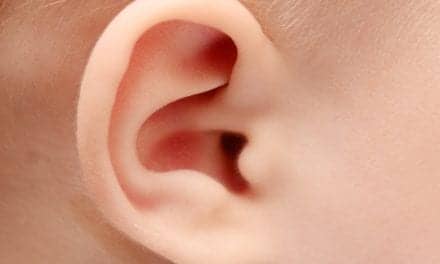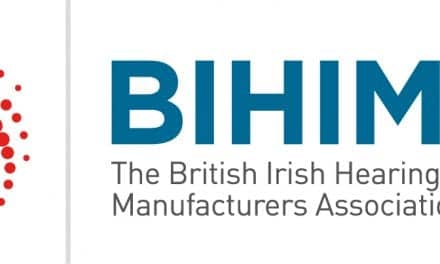A team of Mass Eye and Ear researchers in the Eaton-Peabody Laboratories have been awarded a five-year, $12.5 million P50 Clinical Research Center Grant from the National Institute on Deafness and Other Communicable Disorders (NIDCD) of the National Institutes of Health (NIH) to continue their research on cochlear synaptopathy, or hidden hearing loss, a type of hearing damage first discovered at Mass Eye and Ear in 2009. An article detailing the research appears on the Mass Eye and Ear website.
Funding from the grant extends support of four projects that aim to clarify the prevalence, nature, and functional consequences of hidden hearing loss in humans. The work promises to inform cellular-based diagnosis and development of future therapies. Each of the related projects is led by a separate principal investigator.
Sharon G. Kujawa, PhD, Sheldon and Dorothea Buckler Chair of Otolaryngology at Mass Eye and Ear and professor of Otolaryngology–Head and Neck Surgery at Harvard Medical School; Charles Liberman, PhD, professor of Otolaryngology–Head and Neck Surgery at Harvard Medical School; Stéphane F. Maison, AuD, PhD, CCC-A, associate professor of Otolaryngology–Head and Neck Surgery at Harvard Medical School; and Daniel B. Polley, PhD, professor of Otolaryngology-Head and Neck Surgery at Harvard Medical School and interim director of the Eaton-Peabody Laboratories, are the collaborating Mass Eye and Ear principal investigators on the projects. Dr Kujawa is the program director overseeing the entirety of the grant.
Under the initial Mass Eye and Ear grant, the research team focused on detecting and characterizing hidden hearing loss in humans and animals with normal hearing thresholds. With the new grant, their focus will expand to detecting this hearing damage in the presence of hearing loss as traditionally defined by a clinical audiogram, as well as to better understanding the consequences of this damage in hearing function.
Mass Eye and Ear now has two P50 grant currently supporting research projects. A separate $11.9 million P50 grant was awarded to Kristina Simonyan, MD, PhD, Dr med, in September for the formation of a new, multi-disciplinary center committed to conducting research on laryngeal dystonia and voice tremor.
“The discovery of hidden hearing loss has forever changed the way the way clinicians think about hearing loss, from its diagnosis and to its treatment,” said Mark A. Varvares, MD, FACS, Chief of the Departments of Otolaryngology Head and Neck Surgery at Mass Eye and Ear and Massachusetts General Hospital. “The continuation of this P50 grant is another example of our commitment to pioneering life-changing diagnostics and cures at Mass Eye and Ear.”
The audiogram has long been used by clinicians as the gold-standard for hearing tests. The test reflects the health of sensory cells in the inner ear, called hair cells, which convert sound into electrical signals. While the health of these cells can determine a person’s hearing threshold, or how loud a sound needs to be in order for a person to hear it, the thresholds do not reveal how clearly sounds are heard. A healthy auditory nerve, able to faithfully transmit sound information to the brain, plays a crucial role.
In 2009, Drs Kujawa and Liberman discovered that exposure to noise destroys the synapses connecting hair cells to the auditory nerve well-before the noise damaged hair cells, which meant hearing damage could exist before it was revealed by the audiogram.
“We used to think that if thresholds recovered to normal after exposure to noise, then there was no lasting ear damage, which we’ve come to find out isn’t the case,” Dr Kujawa said. “Rather, it’s as if the loss was ‘hidden’ in the normal audiogram.”
This prompted the researchers to evaluate widespread neural degeneration in patients who had hearing difficulties, but also had normal audiogram measurements.
Since Drs Kujawa and Liberman’s 2009 discovery, investigators have made it a priority to understand what hidden hearing loss is, what causes it, and how to identify it. In 2017, the NIH awarded Drs Kujawa, Liberman, Maison, and Polley a P50 grant to research this new type of hearing damage from multiple angles. Through four separate projects, including one studying donated human temporal bones, one focusing on animal models of human hearing loss, and two working with human subjects, the team of researchers has found widespread evidence of neural degeneration hidden behind normal audiogram measurements.
Their research also unveiled several new clues about this new type of hearing damage. Growing evidence has suggested that perceptual disorders, some as mild as difficulty hearing in a noisy environment, or as potentially debilitating as tinnitus and hyperacusis, could share a common tie to neural degeneration. Additionally, studies found that sound deprivation — not just aging, loud noises or ototoxic drugs — can lead to neural degeneration.
According to Dr Kujawa, evaluating human and animal subjects with overt hearing loss under the new P50 grant will bring investigators a step closer to devising sensitive diagnostic tools, thereby making it possible to apply future therapeutics to prevent, limit, or reverse cochlear neural degeneration.
“Right now, we have therapeutics on the horizon that have shown the potential to repair or reconnect these nerve fibers in the inner ear,” she said. “If we can improve our tests so they show us who has neural degeneration and who doesn’t, then we can test the efficacy of these therapeutics, which would be a big advance for hearing loss research and clinical treatment.”
Research reported in this publication was supported by the NIDCD of the NIH under Award Number P50DC015857. The content is solely the responsibility of the authors and does not necessarily represent the official views of the National Institutes of Health.
Source: Mass Eye and Ear






